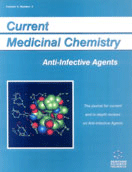Abstract
Trichoderma and Gliocladium species are common hyphomycetes that occur in all climate zones, ranging from Antarctica to the tropics, and are ubiquitous in the environment, especially in soils. Although they are aggressive competitors in the soil, most species are non-phytopathogenic and, generally, do not affect healthy humans. Their ability to express high cellulase activity has been commercially exploited. Chitinolytic enzymes produced by these fungi are thought to be responsible for the degradation of cell walls of those fungal plant pathogens which they parasitise. Trichoderma and Gliocladium species have long been studied as biological control agents of phytopathogens and are characterised by their ability to produce a wide range of secondary metabolites with diverse biological actions, including antifungal activity. The secondary metabolism of the two genera is dominated by compounds derived from the polyketide pathway and from elaboration of amino acid metabolism, but sesquiterpenes and sterol-derived metabolites are also represented. In this review, the potential of these fungi as producers of secondary metabolites that show antibacterial and antifungal activity is considered. Various aspects of the chemistry, biosynthesis and bioactivity of these compounds is discussed and their relationship to other recognised antiinfective metabolites is emphasised.
 5
5

